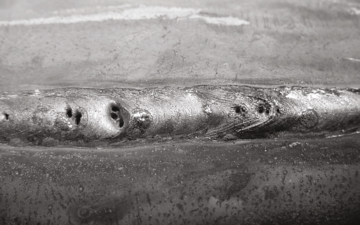Exactly how to Determine What is Porosity in Welding and Improve Your Method
Exactly how to Determine What is Porosity in Welding and Improve Your Method
Blog Article
Comprehending Porosity in Welding: Discovering Causes, Results, and Avoidance Techniques
As experts in the welding industry are well conscious, recognizing the reasons, results, and prevention strategies related to porosity is vital for attaining durable and reliable welds. By delving right into the root causes of porosity, analyzing its damaging impacts on weld high quality, and checking out reliable avoidance approaches, welders can improve their expertise and skills to generate premium welds regularly.
Common Reasons For Porosity
Porosity in welding is primarily brought on by a combination of elements such as contamination, incorrect securing, and inadequate gas protection throughout the welding process. Contamination, in the kind of dust, oil, or corrosion on the welding surface, develops gas pockets when heated up, bring about porosity in the weld. Inappropriate shielding happens when the shielding gas, frequently made use of in procedures like MIG and TIG welding, is unable to fully safeguard the molten weld pool from responding with the surrounding air, causing gas entrapment and succeeding porosity. In addition, insufficient gas protection, usually because of incorrect circulation prices or nozzle positioning, can leave components of the weld vulnerable, allowing porosity to form. These elements jointly contribute to the formation of gaps within the weld, weakening its honesty and potentially triggering structural issues. Recognizing and attending to these typical reasons are essential steps in avoiding porosity and making sure the top quality and stamina of welded joints.
Impacts on Weld Top Quality
The visibility of porosity in a weld can dramatically compromise the overall top quality and integrity of the welded joint. Porosity within a weld produces voids or tooth cavities that compromise the structure, making it a lot more susceptible to breaking, deterioration, and mechanical failing.
Moreover, porosity can impede the effectiveness of non-destructive screening (NDT) techniques, making it challenging to spot other issues or stoppages within the weld. This can result in significant safety problems, particularly in crucial applications where the architectural integrity of the welded components is critical.

Prevention Techniques Introduction
Offered the damaging effect of porosity on weld high quality, effective avoidance strategies are essential to keeping the structural stability of bonded joints. In addition, choosing the ideal welding criteria, informative post such as browse around this web-site voltage, current, and take a trip speed, can help minimize the danger of porosity formation. By including these prevention strategies into welding practices, the event of porosity can be significantly reduced, leading to stronger and more reliable welded joints.
Value of Proper Protecting
Proper shielding in welding plays a vital function in protecting against climatic contamination and making certain the stability of welded joints. Securing gases, such as argon, helium, or a mixture of both, are commonly utilized to secure the weld pool from responding with elements airborne like oxygen and nitrogen. When these reactive elements come into call with the hot weld pool, they can trigger porosity, resulting in weak welds with reduced mechanical buildings.

Poor protecting can result in various defects like porosity, spatter, and oxidation, endangering the structural honesty of the welded joint. Therefore, sticking to appropriate shielding methods is essential to generate high-grade welds with very little problems and ensure the durability and dependability of the welded elements (What is Porosity).
Surveillance and Control Techniques
Exactly how can welders efficiently keep track of and control the welding process to make certain optimum results and avoid defects like porosity? One trick approach is with using website here sophisticated tracking innovations. These can consist of real-time surveillance systems that give responses on criteria such as voltage, existing, travel speed, and gas circulation rates. By continuously keeping track of these variables, welders can determine inconsistencies from the perfect conditions and make instant adjustments to avoid porosity development.

Furthermore, implementing proper training programs for welders is vital for keeping track of and controlling the welding procedure efficiently. What is Porosity. Enlightening welders on the value of keeping constant parameters, such as proper gas protecting and travel rate, can help protect against porosity issues. Routine analyses and qualifications can likewise make certain that welders are efficient in tracking and managing welding procedures
In addition, using automated welding systems can boost monitoring and control capacities. These systems can exactly regulate welding criteria, lowering the possibility of human error and guaranteeing consistent weld top quality. By integrating advanced surveillance modern technologies, training programs, and automated systems, welders can effectively check and regulate the welding process to lessen porosity problems and attain premium welds.
Final Thought

Report this page